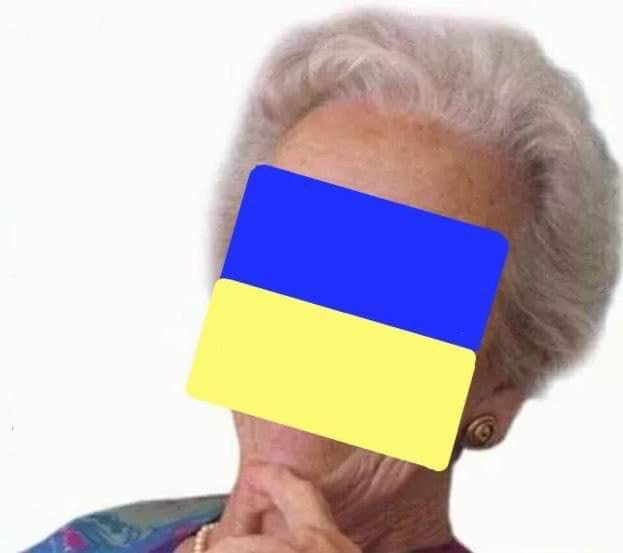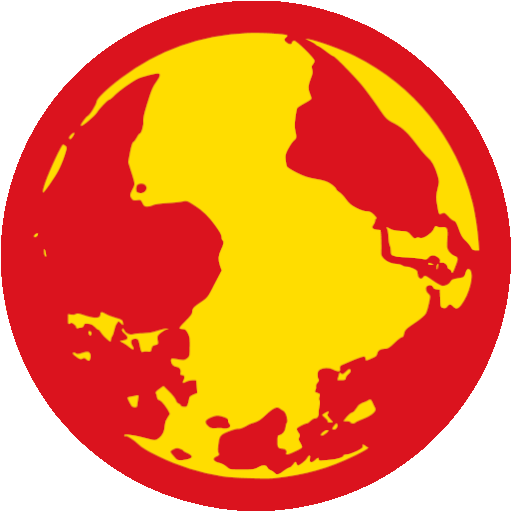MultigrainCerealista [he/him, comrade/them]
- 0 Posts
- 49 Comments

 6·10 months ago
6·10 months agodeleted by creator

 291·10 months ago
291·10 months agoIn future we will add a disclaimer:
CONTENT WARNING THE FOLLOWING REPLY REQUIRES THAT YOU CONSIDER YOUR ASSUMPTIONS AND THINK CRITICALLY
Is that a reasonable compromise?
This way you can maintain your thought free information bubble and we can still point out the ways in which mainstream propaganda shapes your world view, and you can just comfortably ignore it.

 564·10 months ago
564·10 months agoQatar, and by extension of cash money also Al Jazeera, is very anti-Iran.
I’m not seeing any news of this at all in Iranian media, which actually is fairly tabloid and weight lifting is a big thing in Iran. Even if you want to tell yourself the regime has absolute control over information, which isn’t true, they’d still need to provide a cover story due to the high profile nature of it and I don’t see one.
Also Iranian social media is vibrant and also I don’t see anything in Persian but maybe I’m using the wrong search terms?
All I see are the bbc and the telegraph and cnn etc etc etc repeating almost exactly the same story word for word.
It seems like fake news to me. The classic case of one biased journalist writing a story, sending it to AP, and the entire western media just repeating the thing word for word because it’s free news inches and posting propaganda of this nature is oddly enough free in our modern system of journalism.
It seems unlikely to actually be true to me. It seems more likely that it’s being syndicated without any critical enquiry because it agrees with the establishment narrative about Iran.

 2·11 months ago
2·11 months agoI’m not sure if they’ve been collected. They were a series of letter-essays published in journals of economic history / political sciences.
Eg
Edit - most or all seem collected here https://newcoldwar.org/archive-of-writings-of-professor-mark-tauger-on-the-famine-scourges-of-the-early-years-of-the-soviet-union/
You can steal most of Tauger’s work from libgen http://libgen.is/search.php?req=Mark+tauger

 11·11 months ago
11·11 months agoUkrainian Commander Urges More Defenses in the Northeast
In an apparent break with Pentagon advice, Oleksandr Syrsky, Ukraine’s top general in the east, called for “all measures” to defend an area where Russia was threatening to take more territory.
As Kyiv and Washington debate where Ukraine should commit troops along the war’s front line, Ukraine’s top general in the east has called for more reinforcements in a patch of territory where Russia is threatening to make additional gains.
Russian forces have managed to push forward around the northeastern Ukrainian city of Kupiansk in recent weeks as Kyiv’s forces have made slow headway in their continuing counteroffensive in the south and the east. Russia’s gains, while not significant, have led Ukrainian forces to dedicate some troops to defend parts of the sprawling front line, which stretches for several hundred miles, despite their need elsewhere.
“Enemy units continue to inflict damage with artillery, mortars and aircraft,” Gen. Oleksandr Syrsky, the commander of Ukraine’s eastern forces, said on the Telegram messaging app on Friday. “Under such conditions, we must promptly take all measures to strengthen our defenses on the threatened lines and advance where possible.”
The debate over Ukraine’s strategy has spilled into public view in recent days amid a flurry of news media reports, including from The New York Times, in which U.S. officials have blamed Ukraine’s slow progress in large part on its strategy.
Under the Pentagon’s reasoning, Kyiv should have massed an outsize number of forces on one portion of the front line to attempt a breakthrough. Ukrainian commanders have instead tried to divide troops and firepower in a manner that they consider to be as fair and as equal as possible between the east and south.
President Volodymyr Zelensky of Ukraine responded bluntly to the American criticism this past week, saying that shifting Ukrainian forces away from places like Kupiansk, in the Kharkiv region, is what Russia is trying to accomplish.
“We will not give up Kharkiv, Donbas, Pavlohrad or Dnipro. And that’s that,” he said during a news conference on Wednesday according to the Ukrainian Pravda news outlet. “And let all the analysts in the world not even count on it.”
General Syrsky’s remarks were another reminder that despite the public focus on the counteroffensive in the south, other parts of the front line remain volatile.
“The enemy is now regrouping its forces and means, while also transferring the newly formed brigades and divisions from the territory of Russia,” General Syrsky said. “Russia’s key objective is to increase the level of combat potential and resume active offensive actions.” His claims about the arrival of new units could not be independently confirmed.
ave called for the evacuation of Kupiansk as Russian forces edge closer and shelling continues far behind the front lines. On Saturday, two civilians were killed in shelling in a small village just east of the city, according to local officials.
Ukraine took the city back from Russian control last September after it had been under occupation since the war’s early months, and losing it again would be a major blow. It appears unlikely, however, that Russian forces would try to retake the city, since that would put them in the position they faced before they were forced to retreat from Kherson last year, holding a city with a river at its back and limited supply lines.
Russian forces could instead try to push to the Oskil River, which runs north and south, and then use the waterway as a natural barrier against further Ukrainian attacks.
“Kupiansk will not be occupied anymore under any circumstances,” Andrii Besedin, the head of the Kupiansk city military administration, said on Telegram.

 1·11 months ago
1·11 months agoI see a lot of geopolitical calculus in your response - to what extent is the influence of the US over Europe and European markets limited by a Russian victory. You present something of a US-centric point of view but sure it’s a valid one. If Russia wins then yes likely the geopolitical influence of the USA will be knocked back to where it was in the 1980s with true multipolar politics, and it’s also true that if Europe wasn’t sanctioning Russian energy then they’d likely be buying that much cheaper energy, thereby reducing the geopolitical influence of the USA over Europe.
So I think I agree with most of what you say. But your perspective leaves something very important out of the equation:
Where does the will of the people who live in Donbas and Lubansk and Crimea factor into your math? Do we respect their right to self-determination? If not, why not?

 3·11 months ago
3·11 months agoThe US is calling for the Somme

 1·11 months ago
1·11 months agoYou’re very welcome but honestly in the current political climate you’d be best not touching this topic at university because people will come after you.
But it’s a very interesting history, by which I mean the history of how the narrative was created is very interesting.
There is another work that is completely unrelated to the Ukrainian genocide, completely not related, but it does an excellent job of describing how history is constructed by the elites of society to support their ideology. It’s “the assassination of Julius Caesar” by Michael Parenti. I’ll repeat that it has absolutely nothing to do with ukraine, as the title suggests it’s about the assassination of Julius Caesar but more than that it’s an exploration of the way history is written by elites and propagated by “respectable” parts of society, invariably the institutions aligned with the wealthiest parts of society, and how history serves a vital role in propaganda.
If you’re studying history, you’ll love it.

 2·11 months ago
2·11 months agoIt’s political polemic written by a prominent Canadian trade unionist and communist party member so no it wouldn’t pass muster as an academic source, but it was written with rigor and he cites his sources.
What he writes is a collecting of facts established by others that he then peppers with (righteous) polemic, and it’s that polemic which makes it unsuitable for academia rather than the reliability of the information within it.
The three major claims are
- The holodomor was not a genocide, which represents the historical consensus on the topic until about 10 years ago when Ukrainian nationalism became a very useful tool for the west which is when Timothy Snyder and Anna Applebaum started popularizing the famine-as-genocide narrative that previously was confined to Ukrainian nationalist circles. For a more academic approach to this topic I would recommend the work of Mark Tauger who is an economic historian who went deep into the data and chose to prioritize data over anecdote and he makes a very convincing case that the holodomor was a famine, not a genocide, and indeed more Russians died in that famine than Ukrainians, and the single most affected ethnicity was in fact the Khazaks as the famine affected all southern USSR. He also includes data that shows the famine in Ukraine was greatly exacerbated by the Ukrainian nationalists - who were supported by Poland at the time which had already conquered parts of Ukraine and Belorussia as part of the Polish military expansionism of the 1920s and 1930s. Most convincingly he explores the efforts at famine relief the Soviets undertook. He got into a fight with Applebaum where she criticized him for being a “genocide denialist” and he criticized her for relying almost exclusively on anecdote. Prior to the Ukraine war, about a third of the wiki page on the holodomor was about Taugers work on the topic (and the thorough debate he had with Wheatcroft which is a series of letters you should look up, Tauger vs Wheatcroft for the most thorough and thoroughly academic exploration of the topic.)
- That Canada resettled the Ukrainian SS division, which committed crimes equal to the worst crimes against humanity including organized genocide of Jews, Romani, and other ethnic minorities in Ukraine, giving the Nazi battalion refugee status and carefully looking the other way to avoid acknowledging the very obvious and demonstrable fact that they were war criminals and part of the SS. This group, also known as the OUN, formed a community in Canada which is still extremely nationalist in character and this community are the ones you see flying nazi symbology quite openly in Canada (such as the black sun) and who erected a monument to nazi SS divisions to “honor their ancestors.”
- That the holodomor-genocide idea originally comes from Nazi propaganda when the Nazis were seeking to justify their war of conquest against the USSR and to cultivate a “fifth column” of Ukrainian nationalists, seeking to build upon the efforts of Poland to split Ukrainians away from the USSR into the Polish orbit. He shows how the photos used in the Nazi propaganda were first debunked back in the 1930s (eg photos depicting earlier famines or famines in other locations entirely) but then found their way into supposedly respectable academia mostly at Havard and mostly historians who interestingly enough were “former” members of the OSS during WW2 (information and propaganda officers who “retired” from that role to take up positions as historians at Havard) and a lot of the emotive imagery used to prove the genocide were debunked as fake news close to a century ago and furthermore were debunked as fake news written by Goebbels and the Nazis no less.
If you want solid academia that relies on data then refer to Tauger. He’s the only historian I’ve encountered who actually preferences economic data (which he rigorously cross checks against other indicators to ensure it’s reliability, eg comparing grain yields to prices to ensure the data is consistent across various dimensions). He has been trashed over the past decade mostly by Applebaum who relies on anecdote and human stories, frequently from the Ukrainian SS refugees in Canada and also has at times used the same photos the Nazis used that were of previous famines in other locations.
The other major historian who pushes the genocide narrative in the west is Timothy Snyder mostly in his work “bloodlands” which was written for a popular audience rather than an academic audience, which also is notable for relying significantly on anecdote. His work also suffers from the way he tells his story, which he presents alongside the Nazi atrocities and sometimes Polish atrocities, seeking to join all these events together in a narrative sense by telling these accounts side by side even though there is little reason to group all these events together.
Edit: oh and Wheatcroft is another much earlier proponent of the genocide narrative who attempted to engage Tauger on the data and Tauger gave him an absolute smack down in a series of essays, which were published but written as letters more or less. Wheatcroft ends up basically name-calling as Tauger gives a veritable smack down based on data and for a while this represented something of the consensus position, that it was a famine mostly driven by natural causes, partly exacerbated by collectivization, that the Soviets paused collectivization once they realized how bad things were on the ground, how the Soviets also engaged in famine relief efforts, and how the single biggest man-made contributor to the famine was the mass slaughter of animals especially horses and cattle by the small percent of the population who owned a lot of land, not a genocide.
Also other historians who are extremely hostile to the USSR such as Stephen Kotkin also say it wasn’t a genocide, which indicates the general consensus that existed on this topic before Ukrainian nationalism became useful to US foreign policy goals.

 0·11 months ago
0·11 months agoLook for “Fraud Famine and Fascism” by Douglas Tottle on libgen and have a read.

 234·11 months ago
234·11 months agoThe crisis is over
That’s the thing. It isn’t.

 6716·11 months ago
6716·11 months agoUkraine should perform under the flag of Bandera

 264·11 months ago
264·11 months agoIt is though. You can look at so many measures from perception of democracy among the citizens, the degree to which power is devolved to the local level most answerable to the community, and the turnover of elected officials being far higher than western democracies which usually feature politicians with what amounts to lifelong tenure.
People actually think China is still run the way it was back in the 1960s because their world view is formed from memes. It’s a democracy and a more vibrant one than what we usually see in the west.
But someone will reply to this with a meme about social credit without realizing they don’t earn Reddit gold here.

 362·11 months ago
362·11 months agoOur posting power is high and we are online a lot

 444·11 months ago
444·11 months agoThe Hungarian uprising was killing Jews in the street. It was anti-Semitic from the beginning and the “Jewish Bolshevik” idea from the Nazi era was a motivating factor with the fact several leaders of the Hungarian government were Jewish cited as a battle cry.
https://www.jta.org/2006/10/25/lifestyle/1956-crises-decimated-two-communities
After the uprising, 200,000 Hungarian Jews fled the country fearing it signaled a return of the antisemitism of the recent Nazi-collaborationist regime of the 1940s.
Sending the tanks in to stop this was a good thing. It would have been better if the anti-Semitic uprising was stopped before the pogroms started.

 34·11 months ago
34·11 months agoYes at one point Putin sought to join NATO and the idea didn’t gain traction.
I don’t understand how you feel this helps your argument.

 33·11 months ago
33·11 months agoWhat are you talking about? The Cuban missile crisis was resolved by the missiles being removed and the soviet military presence ended in Cuba.
You’re factually wrong when you seem to say the soviet missiles are still there. They were removed.
The US’s security interests demanded they were removed from the nearby Cuba, and US missiles that threatened the USSR were removed from Turkey.
Peace was achieved by withdrawing the military threat from each others borders.
Likewise peace in Ukraine can only be achieved if Russia doesn’t feel threatened by a NATO presence there.
It’s easy to understand.

 43·11 months ago
43·11 months agoYes, but the point is with Cuba, missiles were removed, peace deal was reached.
Yeah so the obvious conclusion is that peace in Cuba required satisfying the US’s demand to not have a Soviet military presence there.
Likewise peace in Ukraine requires not having a NATO military presence there.
Pretending that NATO isn’t hostile to Russia is also simply disconnected from reality. You need to connect your world view to reality.

Yeah that’s a good point. I don’t see Iran denying this if it were true either so radio silence on the topic makes it seem like it was just made up.